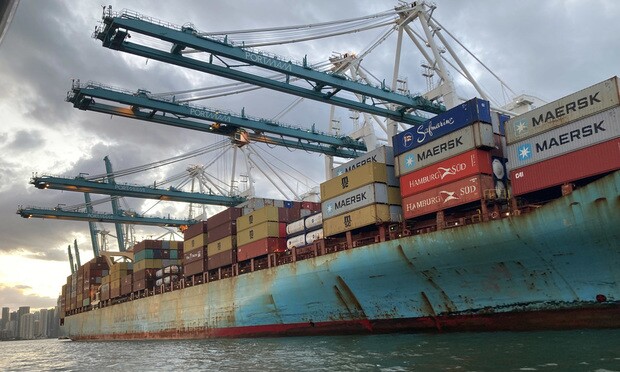Port Industrial Markets Face Short-Term Volatility on Tariff Impacts

The uncertain tariff landscape has created volatility in cargo volumes during the first half, with monthly TEUs imported into the United States declining recently but year-over-year volumes increasing by 3.5% at the 10 busiest ports nationwide. Many port industrial markets have experienced slowing or negative absorption over the past two years, although import volumes remain elevated.
This is according to Cushman & Wakefield’s first half U.S. ports update, which found import volumes rose significantly at the ports of Long Beach, up 10%, Savannah, up 5% and New York/New Jersey, up 3.5%. Some import activity was likely pulled forward to avoid tariffs, the report said. May imports dropped sharply after tariff rates increased and remained modest in June, with only three ports reporting monthly increases.
Many retail and wholesale industrial occupiers have shifted their post-pandemic inventory strategies from “just in case” to “just in time,” said the report. This shift has reduced the need for large warehouses near major ports as more goods are now shipped directly via rail to inland distribution markets like Dallas and Chicago.
Most port industrial markets have recorded rent growth of more than 40% since 2020, with some surpassing 80% over the past five years, said the report. However, major port proximate markets like the Inland Empire and Los Angeles have more recently seen rents fall by 26% and 21%, respectively, as landlords adjust to elevated vacancy levels and tempered demand.
All port industrial markets are expected to have healthy rent growth through 2029, with key markets such as Savannah, Miami, New Jersey and Houston projected to achieve five-year asking rent rate increases of between 12% and 22% through 2029. Most West Coast markets will likely see more modest five-year growth, largely due to weaker near-term growth, said Cushman & Wakefield.
Absorption was negative for the first half of the year in top markets, and vacancy has risen slightly, said the report. Industrial absorption near key U.S. ports typically accounts for 21% of nationwide absorption, but that dropped to 2.2% during the first half of the year. Houston and Savannah bucked the trend, recording healthy year-to-date net absorption of 4 million square feet and 1.6 million square feet, respectively.
Construction deliveries are outpacing absorption in markets like the Inland Empire, with 5.4 million square feet of new deliveries added during the first half. The national pipeline has declined by 41% since the end of 2023, which should provide some supply-side relief.
Despite short-term volatility, port-proximate industrial markets are positioned for strong long-term growth due to their strategic importance near major maritime ports and key population centers, said Cushman & Wakefield. The firm predicts double-digit rent growth over the next five years for eight of the 13 industrial markets tied to the top 10 U.S. ports.
Source: GlobeSt/ALM